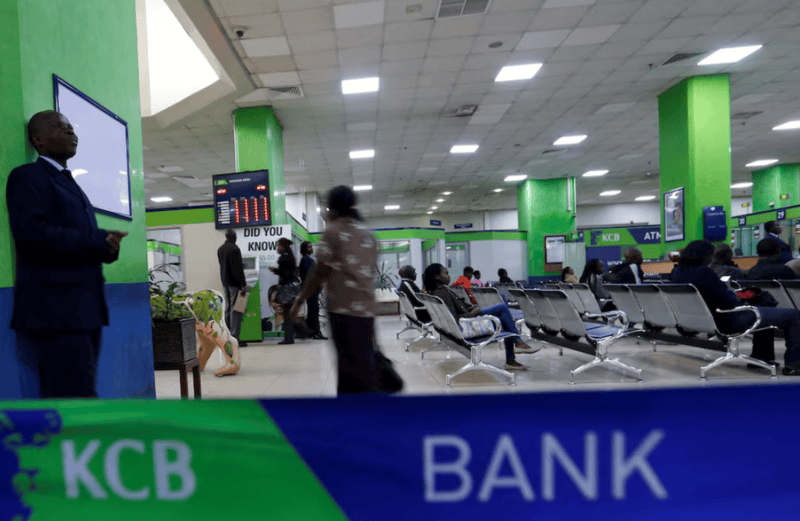Delayed government payments fueling bank loan defaults in Kenya, Fitch warns

According to the agency, the banking industry’s impaired loan ratio, which stood at 17.6 per cent in June, is unlikely to ease until public-sector arrears are significantly reduced.
The continued government delay in settling pending bills is piling pressure on Kenyan banks, with rising loan defaults threatening the stability of the sector, Fitch Ratings has warned.
According to the agency, the banking industry’s impaired loan ratio, which stood at 17.6 per cent in June, is unlikely to ease until public-sector arrears are significantly reduced.
More To Read
- Azziad Nasenya moves to court to stop auction of Sh20 million Kileleshwa apartment
- World Bank urges Kenya to raise excise taxes to clear Sh526 billion pending bills
- Contractors, suppliers on the brink as pending bills mount to Sh177 billion
- Controller of Budget pushes to list counties’ pending bills more than a year old as public debt
- Businesses on the brink as counties’ pending bills soar to Sh176 billion - CoB
- Nairobi tops counties' travel spending, development projects left behind – CoB report
“Impaired loans are unlikely to decline materially until substantial progress is made in reducing the outstanding public sector debt in arrears, which is likely to remain elevated in the short term despite efforts to improve public financial management,” the agency said.
Fitch Ratings highlighted that borrowers’ debt servicing capacity has been further strained by the pandemic, exchange-rate volatility, high inflation and rising interest rates.
An impaired loan ratio, calculated by dividing non-performing loans (NPLs) by total gross loans, reflects the share of a bank’s loans at risk of default. Fitch noted that the ratio has surged from 6.8 per cent in 2015 to 17.6 per cent at the end of June 2025, largely due to delayed payments by the government to contractors and service providers.
Pending bills to contractors
Figures from the Controller of Budget show Kenya’s pending bills to contractors and suppliers rose to Sh524.84 billion by June 2025, up from Sh516.27 billion earlier in the financial year. Despite this, Fitch said the banking sector’s high pre-impairment operating profit provides a buffer to absorb loan losses while supporting capital growth and new lending.
In the nine months to September, the sector’s impaired loans to gross loans ratio slightly declined to 17.1 per cent from 17.6 per cent in the first half of the year. In 2023 and 2024, the ratio was 15.6 per cent and 17.1 per cent, respectively. Fitch also reported that the sector’s total loan loss allowance coverage of impaired loans stood at 59 per cent at the end of June, with net impaired loans representing 23 per cent of total banking sector equity in the first half of 2025.
“Though pre-impairment operating profit as a percentage of gross loans is expected to fall due to higher loan growth and net interest margin pressure from lower interest rates, it will remain sufficient to comfortably cover loan impairment charges,” the agency said.
Impaired loans ratio
Among Fitch-rated banks, KCB had the highest impaired loans ratio at 21.3 per cent, followed by NCBA Bank (13.2 per cent), I&M Bank (12.9 per cent) and Stanbic Bank Kenya Ltd (9.5 per cent). All four banks maintain pre-impairment operating profits ranging from eight to 10 per cent of average gross loans, providing a buffer against potential loan losses.
Fitch observed that FX-adjusted loan growth has remained low—1 per cent in 2024 and the first half of 2025, due to high interest rates, constrained credit supply and attractive yields on government securities. The agency said it expects that lower interest rates, a stable macroeconomic environment and improved borrower capacity will gradually support loan growth, potentially increasing to double digits in 2026, while modestly reducing impaired loan ratios.
Meanwhile, the government has taken steps to address arrears, including a pending bills-verification committee established in September 2023, which verified 86 per cent of claims totalling Sh664 billion and recommended settling arrears equivalent to 1.8 per cent of FY22 GDP through proceeds from future privatisations.
Despite these measures, Fitch warns that significant progress in clearing outstanding public-sector debt is critical for the impaired loan ratio to decline materially, as the arrears are likely to remain high in the short term.
Top Stories Today












































